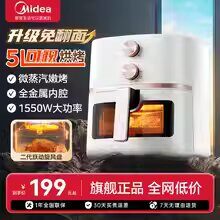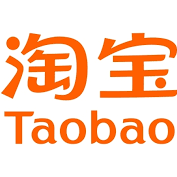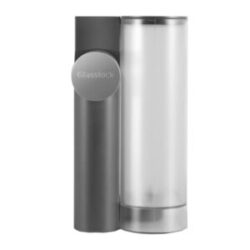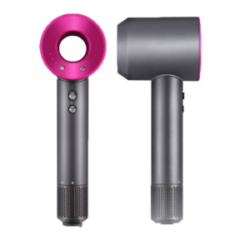四、使用动词时需要注意的几个问题 Points that merit special attention
(一)动词“是” The verb 是
1.动词“是”表示的意义 The verb E has the following meanings
 亚马逊导购
亚马逊导购  卑诗省当天新盘
卑诗省当天新盘  读新闻学外语
读新闻学外语
(1)表示判断。例如: To express judgement. For example:
我是北京人。
今天是星期日。
他是工程师。
(2) 表示存在。例如: To express existence. For example:
楼前边是花园。
那边是海关。
剧场旁边是商店。
他们是那个学校的。
(3)表示类别。例如:
To denote classification. For example:
那是他的,这是你的。
那件上衣是蓝的。
2.“是”的语法特点
Grammatical features
(1)“是”本身不表示具体的动作,后边不能加动态助词“了、着、过”。
是 is not an action verb, therefore it can not be followed by 了, 着 or 过,
(2)“是”后边不能带补语。
The verb 是 cannot followed by complements.
(3)“是”不能重叠。
A cannot be reduplicated.
(4)“是”的否定形式是“不是”。例如:
The negative form of 是is 不是. For example:
我不是上海人。
她不是工程师。
学校对面不是公园。
(二)动词“有”
The verb
1.“有”的用途
Functions of the verb有
(1) 表示领有。例如:
To express possession. For example:
我有字典。
她有时间。
他有中国画。
(2) 表示存在。例如:
To express existence. For example:
屋里有人。
碗里有汤。
村子前边有一条小河。
(3)表示列举。例如:
To give a list of things. For example:
我的朋友有英国人、中国人、法国人、日本人。
屋子里有桌子,有椅子,有书架,有柜子。
(4)表示包含。例如:
To express inclusion. For example:
一年有十二个月。
一个星期有七天。
这本书有十章。
(5) 表示达到(某个数量)。例如:
To express the meaning of reaching a certain quantity. For example:
这些水果有三公斤。
盘子里的杯子有十个。
长江有六千三百多公里长。
珠穆朗玛峰有八千八百四十四点四三米高。
(6)“有”可以跟一些抽象名词,构成形容词性词组,表示在某方面比较多,前边可以受程度副词的修饰。例如:
有can take abstract nouns to make adjective phrase, pre-modified by adverb adverbial adjuncts.
很有经验(very experienced)
很有知识 (very knowledgeable)
很有意思(very interesting)
很有希望(very hopeful)
(7) 有时“有”可以表示泛指。例如:
Sometimes 有can make a general reference:
有一天(one day)
有个地方(some place)
(8)“有”还可以表示比较。例如:
“有” can also be used for comparison. For example:
他有爸爸那么高了。
今天没有昨天那么热。
2.“有”的语法特点
Grammatical features of the verb 有
(1)“有”不能重叠。
有cannot be reduplicated.
(2)“有”的否定形式是“没有”。例如:
The negative form of 有 is 没有. For example:
我没有字典。
屋里没有人。
她没有时间。
这些西红柿没有两公斤。
(三)动词“在”
The verb 在
1.“在”的用途
Functions of the verb 在
(1)动词“在”表示存在。例如:
The verb E expresses existence. For example:
他父母都在。
那座老房子不在了。
(2) 动词“在”表示位置、处所。例如:
To indicate location. For example:
老师在家。
同学们在体育馆。
钱在抽屉里。
2.“在”的语法特点
Grammatical features of the verb 在
(1)“在”后边不能加动态助词“了、着、过”。
The aspectual particles 了, 着 or 过 cannot be used after 在.
(2)“在”不能重叠。
在 cannot be reduplicated.
(3)“在”的宾语一般指处所。例如:
The object of E generally indicates a place. For example:
我在老师家。
墨水在那儿。
他在公司。
钥匙在这儿。
指人的名词或代词不能单独充当“在”的宾语,后边一定要加上“这儿”或“那儿”。例如:
Nouns or pronouns of personal reference cannot be used as objects of 在 unless 这儿 or 那儿 are added to them. For example:
他在我这儿。
我在朋友那儿。
(四)关于动词和宾语
Verbs and objects
- 及物动词可以带宾语,但并不是任何情况下都带宾语。例如:
Transitive verbs can take objects, but this is not necessarily always the case. For example:
他学习汉语。(“汉语”是“学习”的宾语)
(汉语 is the object of 学习.)
学生学习。(“学习”不带宾语)
( In this sentence, 学习 has no object. )
汉语必须带宾语的动词很少。
There are only a very small number of verbs in Chinese that must
have an object.
2.动词和宾语在意义上要搭配得恰当。例如:
The collocation of a verb and its object must be logical. For example:
我们喝水。
她收拾房间。
- 能带两个宾语的动词只限于“给、送、还、借、递、教、问、回答、告诉、通告”等少数动词。例如:
There are only a few verbs that can take two objects, among them are给,送,还,借,递,教,问,回答,告诉,通知 etc. For example:
她教我们英语。
我们回答老师问题。
他通知大家一件事。
4.有些动词不能带宾语。例如:毕业、送行。
Some verbs cannot be followed by any objects, among them are毕业,送行 etc.
明年我就毕业了。
我们去为他送行。
5.有些动词只能带动词宾语,如希望、打算。
Some verbs can only be followed by verbs as objects, such as 希望, 打算 etc.
他希望明年能回来看我。 我不打算去看牙。
(五)动词做主语时要有一定的条件,谓语需由形容词或表示“停止、开始、判断”一类的动词充当。例如:
A verb can be used as subject on condition that the predicate of the sentence must be an adjective or a verb expressing the ideas of “stop, start or judgement”. For example:
朗读是好方法。
锻炼可以增强体质。
工作紧张。
表演开始。
(六)动词做定语或状语时后边要用助词“的”或“地”。例如:
的or地 must be added to a verb used as an attributive or adverbial adjunct. For example:
吃的东西很多。
我有休息的时间。
他关心地说:“你休息吧”。
(七)表示心理活动等的动词可以受程度副词修饰。例如:
Verbs of mental activities can be modified by adverbs of degree. For example :
很喜欢 非常希望
多么爱 特别怕
(八)关于动词重叠
Reduplications of verbs
- 重叠形式和读音
Formulas and pronunciation of the reduplicated verbs
(1)单音节动词的重叠形式是:AA。例如:
The reduplicative formula for monosyllabic verbs is AA. For example:
洗一洗洗
坐一坐坐
(2) 双音动词的重叠形式是:ABAB。例如:
The reduplicative formula of dissyllabic verbs is ABAB. For example:
学习一一学习学习
检查一一检查检查
(3)后面重叠的动词读轻声。
The reduplicated part is in the neutral tone.
2.哪些动词可以重叠,哪些动词不能重叠
Verbs that can be reduplicated and verbs that cannot
(1) 表示动作、行为的动词可以重叠。例如:
Verbs of actions and behaviour can be reduplicated. For example:
听一一听听
讨论一讨论讨论
走一走走
打扫一打扫打扫
问一问问
收拾一一收拾收拾
(2) 含有积极思维活动的动词可以重叠。例如:
Verbs of positive thinking can be reduplicated. For example;
考虑一一考虑考虑
分析一分析分析
想一想想
启发一启发启发
(3) 下面几类动词不能重叠:
The following kinds of verbs cannot be reduplicated:
A. 表示心理活动的,如“怕、羡慕、喜欢”等。
Verbs expressing mental activities, such as 怕、羡慕、喜欢, etc.
B.表示发展变化的,如“生、发展、开始”等。
Verbs expressing change or developments, such as 生、发展、开始, etc.
C. 表示存在、判断、领有的,如“在、是、像、有”等。
Verbs expressing existence, judgement, possession, etc. , such as 在,是,像,有, etc.
D.表示趋向的,如“起、过、出、进”等。
Verbs showing directions, such as 起、过、出、进, etc.
- 动词重叠的附加意义
Implications of reduplicated verbs
(1) 表示动作经历的时间短。例如:
The reduplication of a verb implies a short and quick action. For example :
您坐坐。
我问问他。
这个问题需要思考思考。
(2) 表示尝试。例如:
It expresses an attempt or a trial. For example:
你尝尝,好吃吗?
你摸摸,热不热?
我找找。
(3)表示轻松。例如:
It expresses a sense of being light and relaxed. For example:
休息的时候,可以活动活动。
星期日,我写写信,洗洗衣服。
下班以后,他常常打打球、散散步。
(4)表示婉转语气。例如:
It expresses meaning in a circumlocutory tone.
你帮帮我吧!
休息休息吧!
- 注意事项:
Points that merit special attention:
(1)动词后边如带宾语,只重叠动词,不能重叠宾语。例如:
In a verb-object construction, only the verb and not the object, can be reduplicated. For example:
我擦擦桌子,你扫扫地。
(“桌子”和“地”是宾语,不能重叠)
(桌子 and地 are objects which cannot be reduplicated. )
(2)单音动词重叠时,中间可以加“一”,意思不变;双音动词重叠时,中间不能加“一”。例如:
When monosyllabic verb is used reproductively, “一” can be inserted in between the two parts without changing the original meaning. But this rule does not apply to the dissyllabic verbs. For example:
您说一说。
x你解释一解释。
我想一想。
x我思考一思考。
(3)表示动作完成的动态助词“了”只能放在重叠的词动中
间,而不能放在重叠的动词之后。例如:
The aspectual particle 了 must be placed between the two parts of
the reduplicated verb. It can never be placed after the reduplicated verb.
For example:
她坐了坐就走了。x她坐坐了就走了。
我看了看通知。x我看看了通知。
大家休息了休息。x大家休息休息了。
我们商量了商量。x我们商量商量了。










